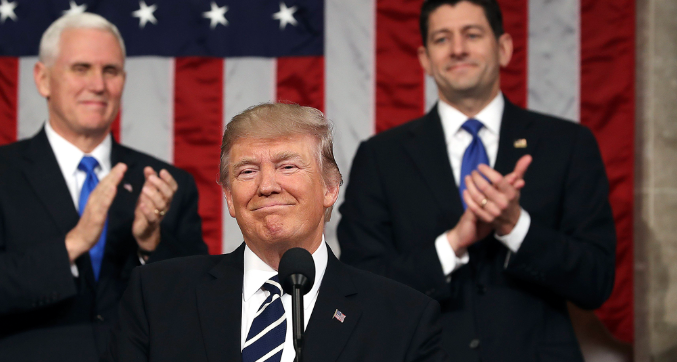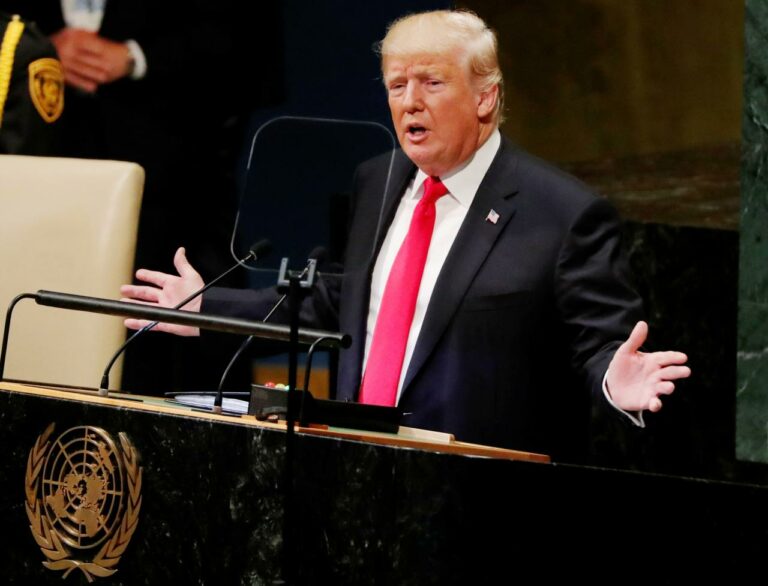In the complex world of American politics, the relationship between the President and Congress is a critical factor that shapes the legislative landscape. The Trump era, marked by its distinctive style and policy approach, witnessed a dynamic interplay between the executive and legislative branches. This article delves into the multifaceted relationship between President Trump and Congress, dissecting key moments, legislative battles, and the overall impact on the nation’s governance.

The Trump Era Commences
The early days of his presidency set the tone for interactions with Congress, revealing both collaborative potential and underlying tensions. The dynamics between the executive and legislative branches would go on to define much of Trump’s tenure.
Legislative Victories and Setbacks
Throughout his term, President Trump encountered a mix of legislative victories and setbacks. From tax reform with the Tax Cuts and Jobs Act to challenges in healthcare reform, Trump’s policy priorities stirred a range of reactions in Congress. This section delves into the highs and lows of Trump’s legislative agenda, exploring the factors that contributed to success and failure.
Trade and Tariffs: Congressional Responses
A notable aspect of Trump’s presidency was his unconventional approach to trade, including the imposition of tariffs. The clashes over trade illuminated broader debates on economic policy and global relations.
Impeachment Proceedings: Round 1 and The Second Impeachment Saga
The spectre of impeachment loomed large over Trump’s presidency. These events, with their intricate proceedings in Congress, marked significant chapters in the contentious relationship between the President and lawmakers.
Executive Orders and Congressional Oversight
President Trump’s utilization of executive orders to enact policy changes without congressional approval was a defining feature of his governance. This section discusses instances where Trump wielded executive power and how Congress responded. Hence, showcasing the delicate balance of authority between the branches.
The Role of Congressional Leadership
The influence of congressional leaders, such as the Speaker of the House and Senate Majority Leader, played a pivotal role in shaping the Trump-Congress relationship. This section explores how key figures navigated negotiations, brokered deals, or clashed with the President. Hence, contributing to the overall legislative landscape.
Legislative Legacy: What Endures?
As Trump’s presidency concluded, its impact on legislation endured. This final section reflects on the lasting legislative changes and their significance in the broader context of American governance. It assesses what elements of Trump’s policy agenda proved enduring and what aspects were subject to change or reversal.
Impact on International Relations
Trump’s presidency significantly influenced America’s standing on the global stage. This additional section explores how Congress responded to Trump’s foreign policy decisions, addressing issues such as international agreements, alliances, and diplomatic strategies.
Public Opinion and Congressional Dynamics
Examining the interplay between public opinion and congressional actions provides another layer of understanding. This section explores how public sentiment, both in support and opposition to Trump, influenced the actions and decisions of Congress.
COVID-19 Response and Congressional Cooperation
The unprecedented challenges posed by the COVID-19 pandemic tested the relationship between the President and Congress. This section delves into how Trump and Congress collaborated or clashed in formulating and implementing strategies to address the public health crisis.
Election Integrity and Congressional Oversight
The aftermath of the 2020 presidential election brought forward challenges to its legitimacy. This section explores how Congress, with its constitutional role, navigated issues of election integrity and oversight during this critical period.
Conclusion
In conclusion, the relationship between President Trump and Congress was a dynamic interplay of power, ideology, and governance. As we examine the legislative journey of the Trump era, it becomes clear that the nuances of this relationship significantly shaped the trajectory of American politics during a pivotal period in its history.














